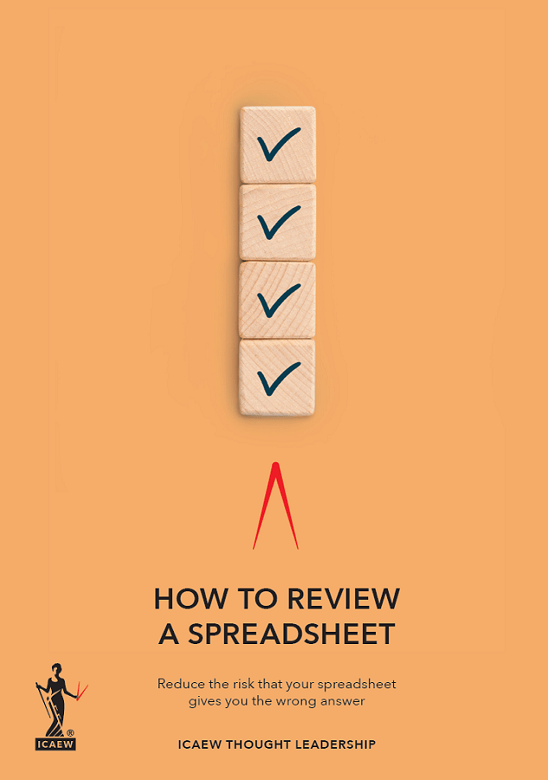What a review consists of
In a large spreadsheet, where there may be tens of thousands of cells containing formulas and thousands of distinct formulas, it would take a long time for a reviewer to manually test and validate every cell. The impracticalities of cost and time would make it inevitable that corners will be cut. Instead, it is helpful to target the most critical areas and outputs.
The guide focuses on five main review stages:
Initial review: checking the big-picture elements to get an initial impression of the state of the workbook and prepare for later stages of review.
Structural review: checking that the spreadsheet is well laid out and includes appropriate checks.
Data review: checking the validity of the input data used in the spreadsheet.
Analytical review: checking if the spreadsheet’s output looks reasonable at a holistic level.
Detailed review: checking the spreadsheet at a more detailed level, including at the individual formula level.
Questions to consider before construction starts
An essential consideration is whether the appropriate package is being used by someone with sufficient competence – and, indeed, whether a spreadsheet is the appropriate tool in the first place. Some of the core areas to consider include:
- What is the purpose of the spreadsheet?
- What level of risk is associated with the spreadsheet?
- How competent is the author?
- Has the spreadsheet been subject to any earlier review?
- What is the life cycle of the spreadsheet?
- What construction controls have been used?
- Should passwords be required?
Post-review activities and useful functionality
The review does not end when the last formula has been checked, but rather when the findings of the review have been documented, communicated to the appropriate people, and changes have been implemented. It could also lead to another review.
The guide includes a synopsis of post-review activities and presents some useful Excel functionality that can support a detailed review.

Join the Excel community
Develop your skills and minimise spreadsheet risk with our Excel resources. Membership is open to everyone, non ICAEW members are also welcome to join.

How to review a spreadsheet
When a spreadsheet is being used to provide the numbers that form the basis of a significant decision, it is reasonable to expect that the data, logic and results are reviewed for accuracy.



